Benrus! The history of the strongest military watch company representing made in America
Click here to watch a video about the history of Benrus.
In this article, I will explain the history and appeal of Benrus, the American-made military watch that we all admire.
By the time you finish reading this article, you will understand just how amazing Benrus watches are, so please read to the end.

Source: https://www.benrus.com/
Founded in New York in 1921
Benrus was founded in New York by Benjamin Lazulus and his two brothers, and the company was named after "Ben" from Benjamin and "Ruz" from Lazulus.
The three men pooled their savings of $5,000 (500,000 yen at an exchange rate of 100 yen), imported Swiss watch movements, and began assembling them in New York, and that was the beginning of the company's history.
Benrus was a fairly late starter in the watch industry, so how did it manage to grow so rapidly in the United States?
The reason for this was a marketing strategy of signing contracts with celebrities and quickly boosting their name recognition.
There are two people who have contributed to improving the brand's power.
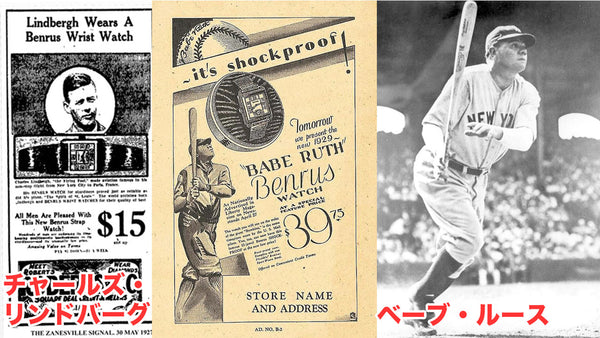
The first was Charles Lindbergh (the first person to successfully cross the Atlantic Ocean in a plane) in the early 1920s, and then, five years after the company was founded, in 1926, it signed a contract with professional baseball player Babe Ruth.
These ads were successful, and in the 1930s Benrus introduced beautiful luxury watch models for men and women which were hugely successful at the time.
However, there will be further prosperity in the future.
1940s: The Birth of the Sky Chief

Benrus was a hit thanks to its advertising, but let's take a look at how well it performed in reality.
In the 1940s, demand for chronographs increased among pilots and the aviation industry, and they began to require watches that could be used professionally.
The Sky Chief is Benrus' first chronograph, combining Benrus' experience with the needs of pilots.
The birth of the SkyChief provided an indispensable tool for pilots who rely on a watch for all navigational tasks.
SkyChief was popular with the major airlines of the time, and carried the slogan "The Official Watch of the Famous Airlines," a design that no pilot could argue with.
Now let's take a closer look at the SkyChief.
The Sky Chief is available with a black or white dial, and the styles are clearly different.

The black dial model comes with a stainless steel case and a black dial, but does not have a calendar date display function.
The hands are pencil hands and the indexes are also coated with luminous paint.
The display is arranged in three registers, with a 30-minute counter at the 3 o'clock position, a 12-hour counter at the 12 o'clock position, and a small second hand at the 9 o'clock position.
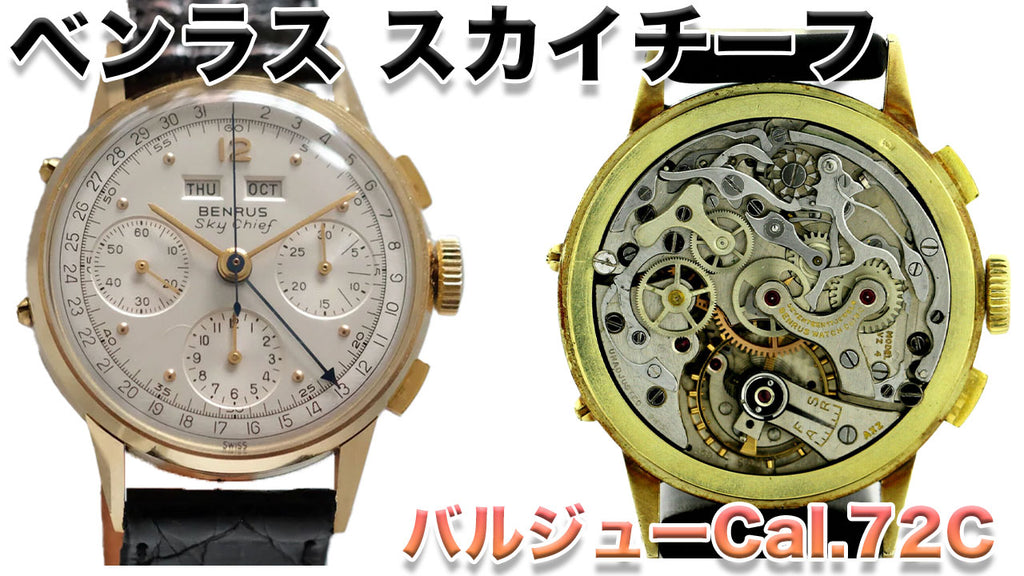
The white dial model has long, thin bar hands and is set with 14K gold and a white dial with a calendar date point function.
Each movement is equipped with Valjoux's masterpiece, Cal. 72, another high-end movement, and when the calendar function is added it becomes Cal. 72C.
Despite this momentum, Benrus attempted to use its financial clout to acquire Hamilton in the 1950s, but failed.
Although it ended in failure, it shows just how much momentum there was at the time.
Diver's Watch Ultra Deep Series
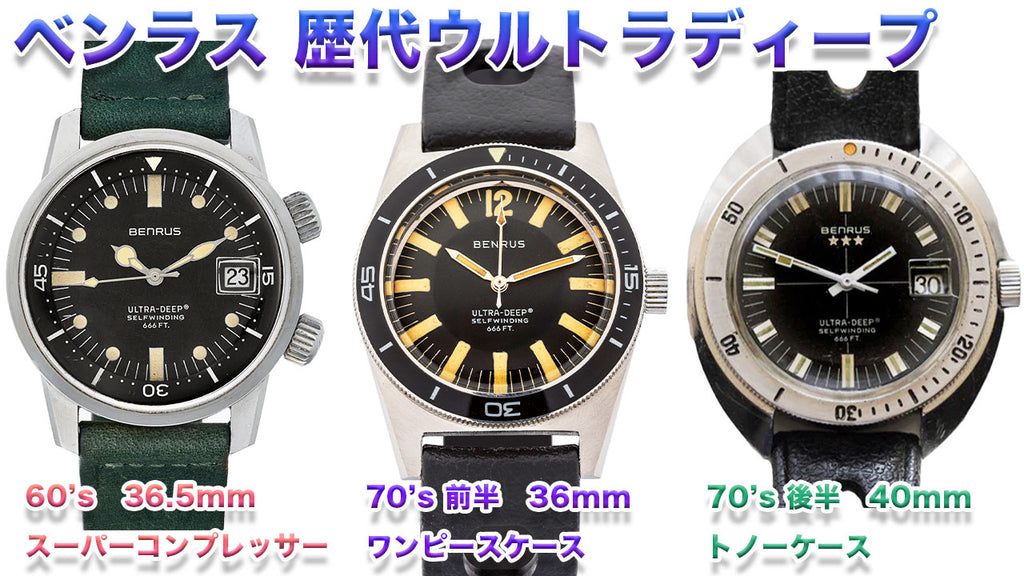 Although not employed by the U.S. military, Benrus also manufactured distinctive diver's watches for three generations.
Although not employed by the U.S. military, Benrus also manufactured distinctive diver's watches for three generations.They were all waterproof to a depth of 666 feet (approximately 200 m), but their construction evolved as they became more modern.
The 60s style has two crowns, which is due to the use of a Super Compressor case made by EPSA (Elvin Piqueres).
The crown at 2 o'clock rotates the internal rotating bezel, while the crown at 4 o'clock serves its normal purpose.
If you are not familiar with the EPSA case, please watch this video:
The second generation, Ultra Deep, was born in the early 1970s and from this point onwards it had a one-piece structure.

In order to completely prevent water from entering through the back cover, the stainless steel is carved out, making a back cover unnecessary.
It is possible to disassemble the dial side, where several parts are installed, but these parts are also designed to seal more tightly when water pressure is applied, so while the watch has been simplified, it still maintains its waterproofness.
The Ultra Deep from the late 70s is characterised by its larger case size.
Up until then, the first generation was 36.5mm and the second generation was 36mm, but the third generation was significantly larger at 40mm.
Since the 1960s, other companies have been manufacturing diver's watches with cases of around 40 mm, but they were primarily intended for professionals who needed to dive deep.
On the other hand, there was also an increasing demand for diving as a hobby among the general public, so it seems that diver's watches with a certain degree of water resistance were created to meet market needs.
1960's Vietnam War Army Military Watch DTU-2A
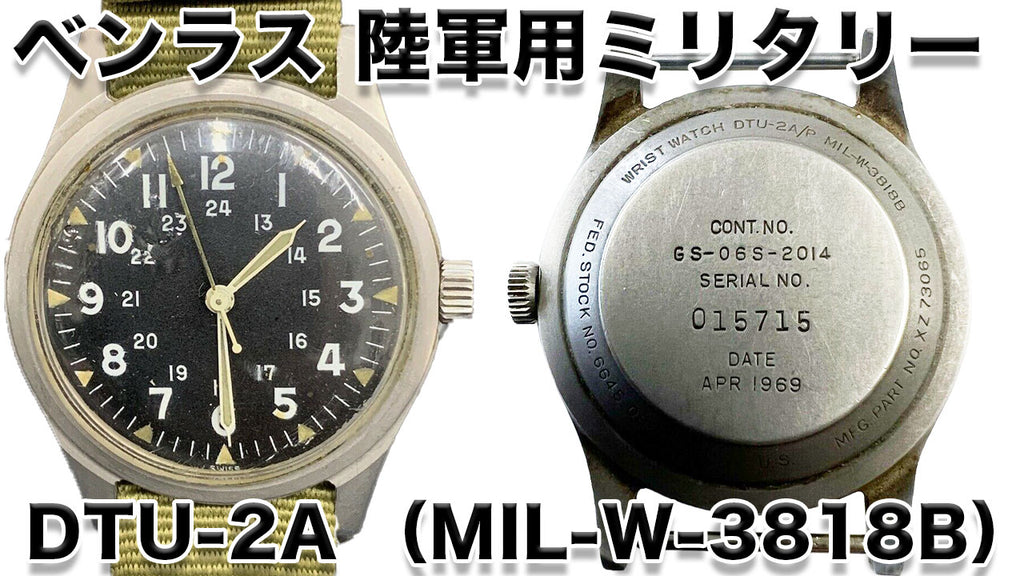
In the early 1960s, the U.S. military decided that the design of their existing military watches ( MIL-W-3818A, made by Brober and Elgin ) needed to be adapted to the needs of soldiers on the battlefield, so they ordered the next model, MIL-W-3818B , from Benrus.
Then, from 1964 to the late 1960s , new Army watches were produced for soldiers in Vietnam.
This new generation watch is the DTU-2A (MIL-W-3818B).
It's a simple military watch, but a great one.

The specs are Swiss made movement, DR2F2 (ETA2372), acrylic glass crystal, 17 jewels movement with hacking function, 36 hour power reserve, accuracy of ±30 seconds per day, tritium luminous paint on the hands.
To prevent sweat-caused water from entering through the gaps in the back cover, a monocoque case with a synchronized back cover is used.
It is designed to be repairable from the windshield, and is made with the assumption that it will be used while replacing parts.
As a military watch, it is still in good condition due to its short age.
Benrus Type I & II
In the early 1970s, the U.S. military drew up detailed designs for a diver's watch that met military specifications, MIL-W-50717, and commissioned Benrus to manufacture it.
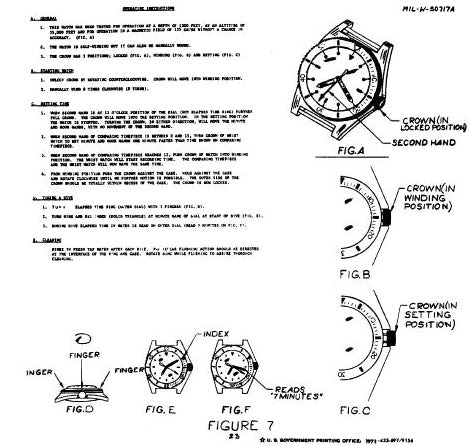
However, in the late 1960s, military budget cuts began to occur, which also affected watches.
The traditional method of making high-quality watches and then repairing them when they break is no longer profitable, so a new idea was born: disposable watches.
The feature of Benrus Types 1 and 2 is that they are disposable watches yet highly functional.
These watches were primarily issued to the US Navy Special Forces, but were also issued to the Army Special Forces, Army Rangers, and the CIA Marine Corps.
The specifications that were required at the time were a large, shock-resistant, highly legible, waterproof, automatic watch that was durable enough for the CIA and military special forces to use.
New specifications included a water resistance of 150 meters, something that had not been possible before the Type I, and an automatic movement that could withstand physical and thermal shocks.
It had to be a very sturdy watch, and interestingly, this specification set the standard for how a tool watch should be.
Therefore, a one-piece case is used, which gives the impression of increased robustness and water resistance.
The Vietnam War lasted from 1955 to 1975, and military spending was a constant battle to cut costs.
This war saw the end of the practice of issuing watches to all soldiers; soldiers were required to source their own watches.
But those who really needed it were provided by the military.
Therefore, watches were only issued to units or personnel whose duties required a durable watch.
The Type I and Type II were issued only to elite troops during the Vietnam War and are some of the most famous and coveted US military diver's watches.
Now let's take a look at each watch.

The one on the left is TYPE I and the one on the right is TYPE II.
What they have in common is that they both have luminous paint on the indexes and hands, and are equipped with rotating bezels.
And the difference between these types is easy to tell by looking at the dial.
The Type I has a triangular index at the 12 o'clock position, bar indexes at 3, 6, and 9 o'clock, and dot markers at the other hours.
In contrast, the Type II dial uses a traditional 24-hour clock with small triangular indexes for each hour.
The difference between Class A and B is in the luminous paint.
Class B watches had no luminous paint on the dials or hands and were used in places like nuclear submarines, where even minute amounts of tritium could cause a reaction.
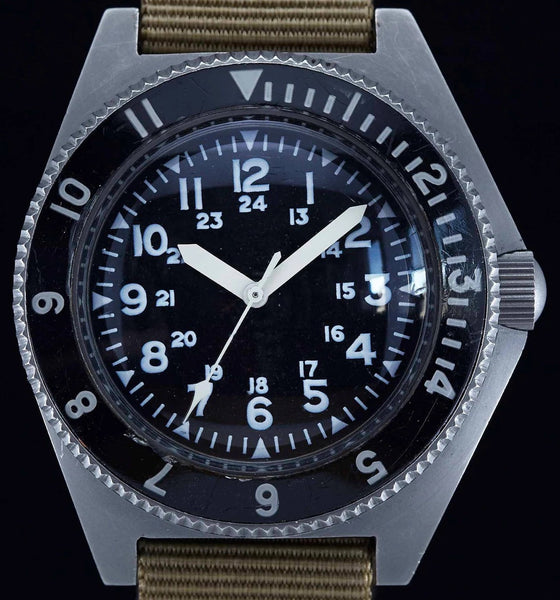
Normally, the triangular marker and the center of the needle would be a faint yellow, but they are pure white.
The white dial, which is the opposite color to the black dial, is used to ensure visibility even inside a nuclear submarine.

On the back of the case
・MIL-SPEC number
·Manufacture name
Product number
·Contract number
·Made date
·Serial number
is engraved on it.
Benrus manufactured the Type I and Type II for approximately 10 years, from 1972 to 1980.
During that time, approximately 6,000 Type I Class As were produced, just over 9,000 Type II Class As, an unknown number of Type II Class Bs, and approximately 1,000 Type II Class Bs.
That's why Class B is an extremely rare watch.
As such, this watch was only available to high-ranking soldiers and elite personnel in the US military, and its rarity has made it incredibly popular today.
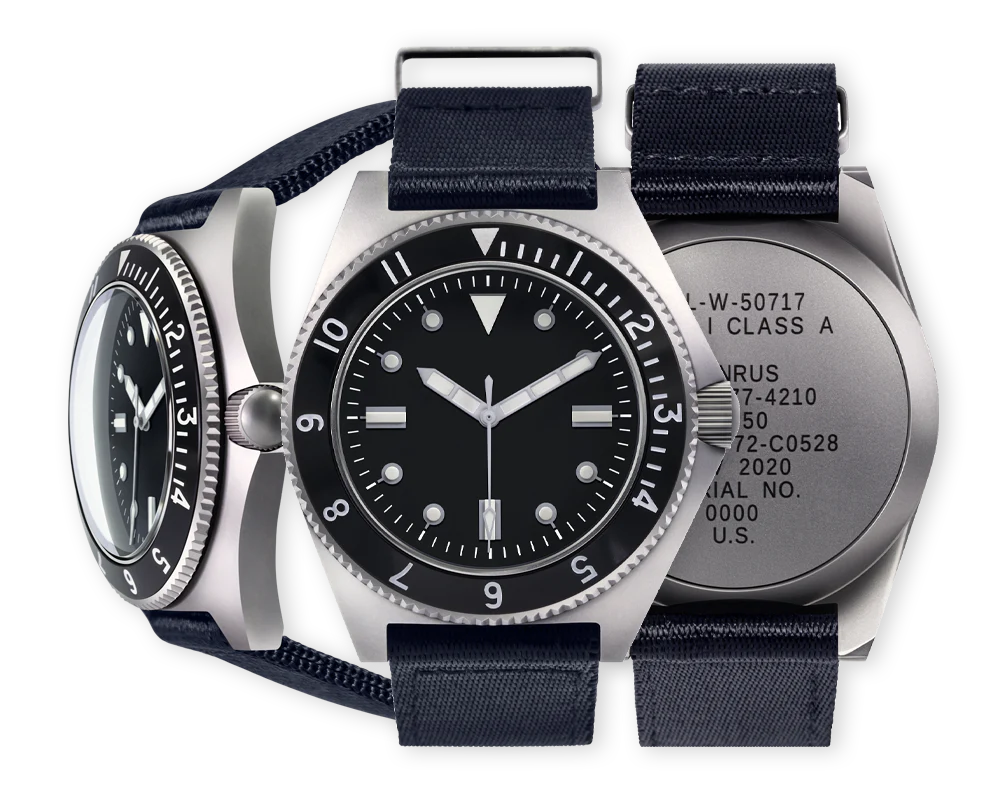
Due to its popularity, a reissue has now been made, and a new Type I Class A can be purchased for $1,695.
While the vintage watch had a case size of 39mm, the reproduction is quite large at 42.5mm.
summary
To sum up, Benrus was unable to withstand the storm of the quartz shock and went bankrupt in the late 1970s.
However, the Benrus watches that we see today overlap with the period of American prosperity and the subsequent war era, and it feels as if the watches themselves reflect history.
This is the case in every country, but at that time, popular watch brands are adopted as military watches.
Considering that Benrus supplied watches from the first half to the second half of the Vietnam War, it's clear that the company was highly trusted by the United States.
This is due to the technical ability to meet the specifications required of a watch and the reliability of the brand that backs it up.
The DTU-2A is affordable, so you can try it out and once you understand its true appeal, you could then move on to a Sky Chief, Type I, or Type II to enjoy your watch collection even more.



